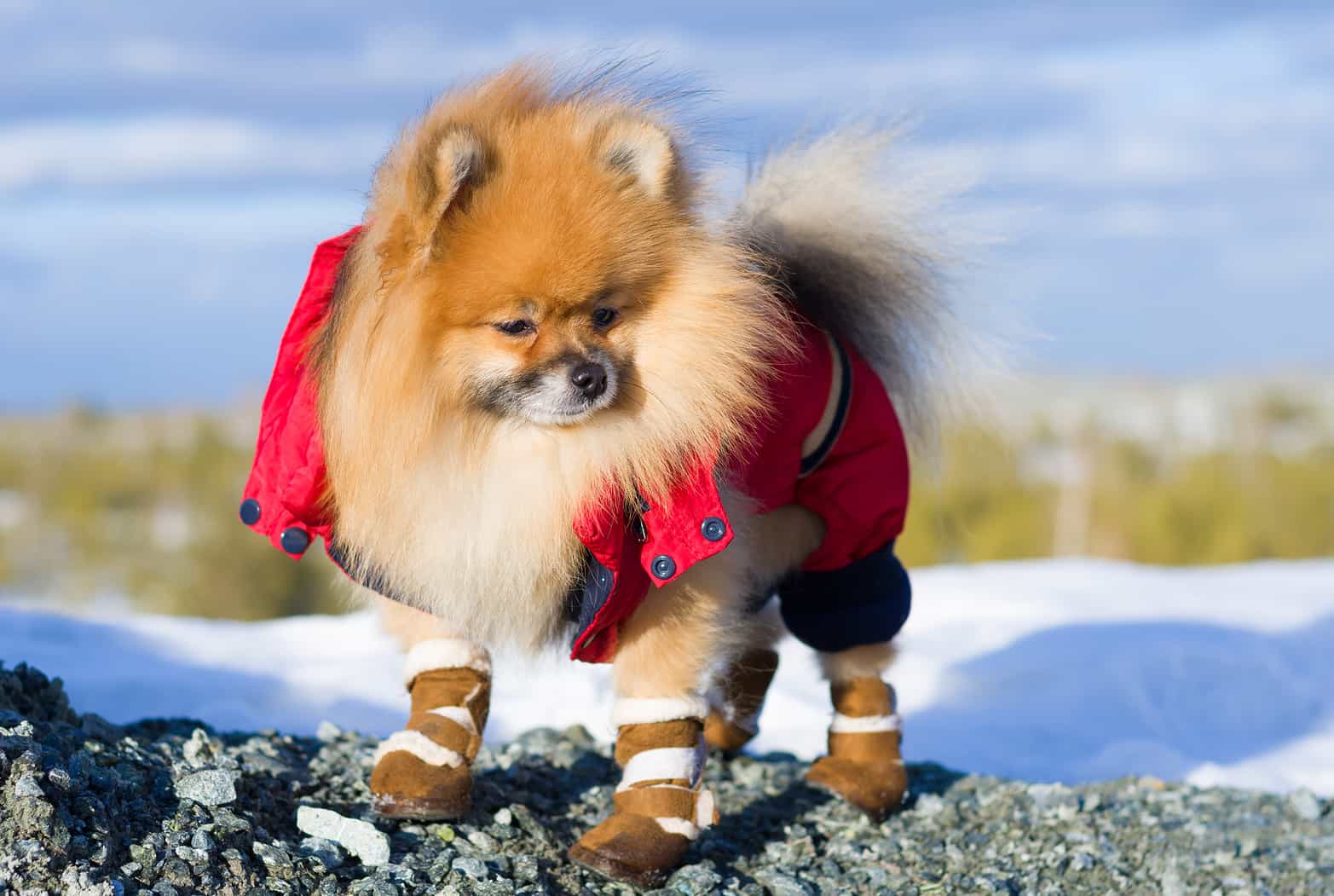
As you pull your boots and heavy coat out of the back of your closet, you should start thinking about preparing your dog for winter, too. Despite all that fur, it’s important to spend a little extra time on dog health care to keep your pet warm and safe in the winter.
Winterizing Your Pet
The best way to keep your pup warm and dry is by limiting time outdoors. Of course, all dogs need to venture out at some point, but make sure that it’s never for too long, and that he or she is always supervised. Try using a sweater or coat to keep your dog from losing body heat if he or she is small or has short hair. If you’ll be spending a lot of time walking in snow or on icy paths, consider using dog booties to keep his or her paws from freezing and to help with slippery surfaces. Dog booties can also protect your pooch’s paws from damage due to corrosive road salt.
If your home is a little on the chilly side in the winter, try getting your pooch a thermal mat. These handy things work like a space blanket, but instead of looking like a weird sheet of tin foil, they are cushioned and comfortable. Enourage your dog to stay in warmer parts of the house by leaving his or her bed and toys in a warm area.
Safety First
Winter days are shorter and darker, so swap out your regular collar for a reflective one, or add a tag with LED lights to make sure your dog can be spotted easily. If your dog is reluctant to wear protective gear, you might need to spend some time training him or her to use it. Start by putting it on for just a few minutes, and then slowly lengthen the time. Treats and praise can also help your dog get comfortable in his or her winter gear.
Keeping Your Dog Healthy
The best dog health care starts with prevention. Luckily, you can take some simple steps to ensure that your dog stays as healthy as possible this winter. If the cold weather keeps you and your pup indoors and less active, you’ll need to find some alternative forms of exercise to help him or her stay fit. If you have enough space inside your home, play games like fetch to get your dog moving. You can also try something a little more unconventional: yoga moves with your dog.
Keeping your dog’s diet healthy and well-balanced is just as important as exercise when it comes to preventive care. There are a variety of factors that go into choosing the best food, like age and weight; but if your dog is used to being extremely active outdoors, and you slow down a great deal during the winter, you might want to talk to your vet about whether you should adjust your pup’s diet.
Hydration is also important in the winter, when the air can be a lot drier with heaters running indoors. Make sure your dog’s water bowl is always full of fresh water, especially when you leave the house for the day.
When It’s Time to See a Vet
No matter how many preventive steps you take, your pup can still get sick. Seeking medical attention at the first sign of illness is the best way to ensure your dog bounces back quickly and is ready to cuddle and play again. From petMD, here are some symptoms of hypothermia that warrant a visit to the vet:
- feebleness
- shivering
- inattention
- stiffness
- shallow breathing
Medical care for pets can be expensive, but don’t let cost get in the way of proper care for your dog. Using pet health insurance through the TotalChoice™ Voluntary Benefits Program is a great way to minimize out-of-pocket costs so that you can afford to keep your pup healthy all winter and throughout the whole year. For more information, refer to this plan information sheet.
By taking precautions before heading outdoors, making sure your dog stays active and adjusting his or her diet, you’ll be able to keep your pup safe and warm this winter.





